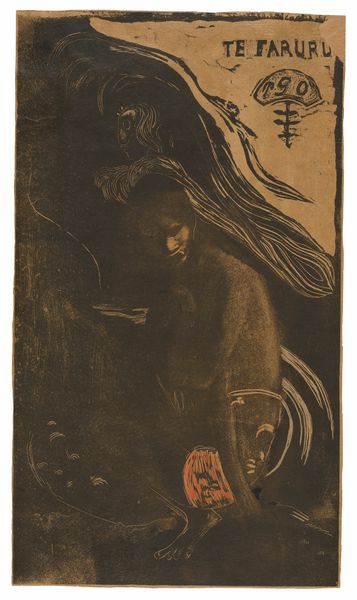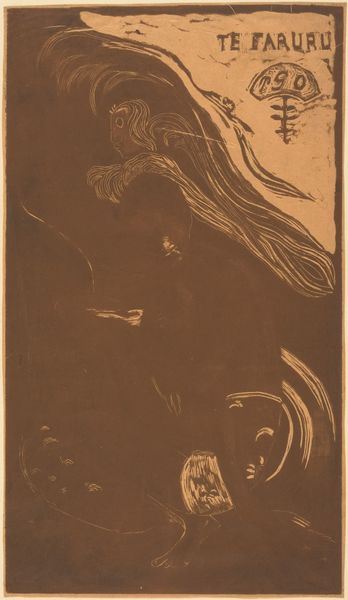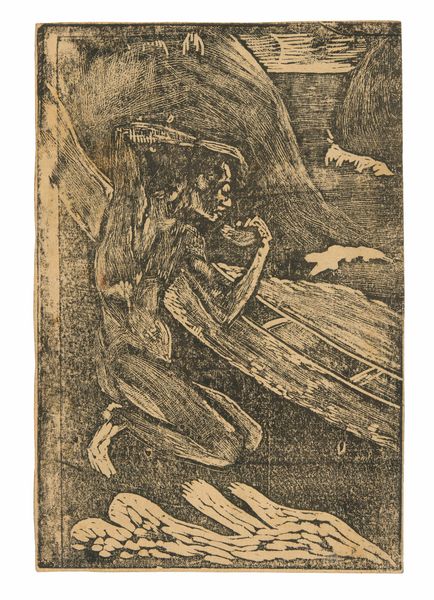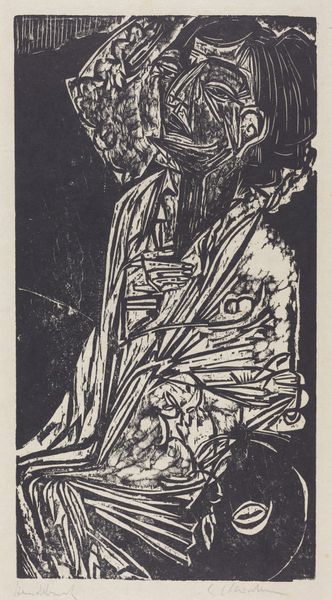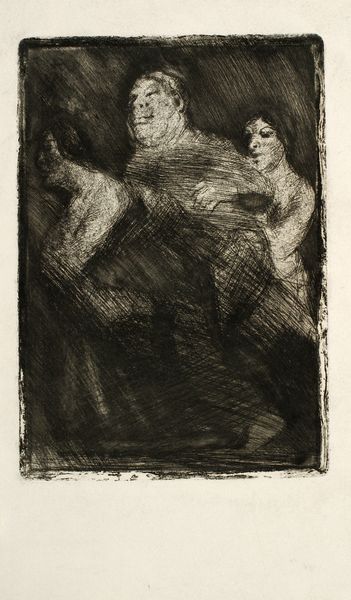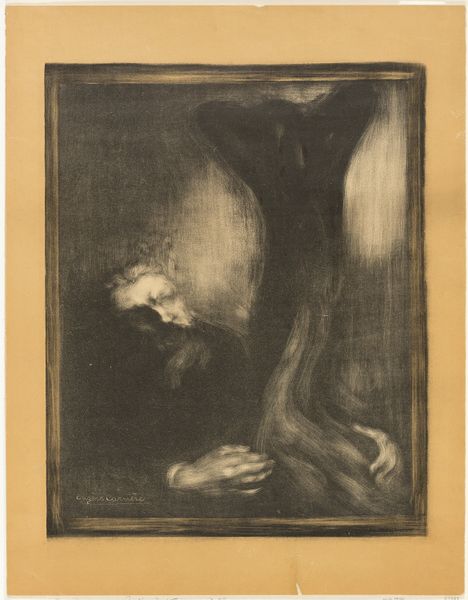
Te faruru (Here We Make Love), from the Noa Noa Suite 1893 - 1894
0:00
0:00
drawing, print, paper, woodcut
#
drawing
# print
#
figuration
#
paper
#
woodcut
#
france
#
post-impressionism
#
nude
#
portrait art
Dimensions: 357 × 205 mm (image/sheet)
Copyright: Public Domain
Editor: So, this is Gauguin’s "Te faruru (Here We Make Love)," a woodcut from 1893-94. It's strikingly dark and intimate, with this central female figure. What do you see in this piece beyond the obvious exoticism? Curator: Beyond the surface, it's critical to understand this work within the framework of colonialism and its impact on Tahiti. Gauguin's romanticized vision of Tahitian women and culture becomes problematic when considered through the lens of power dynamics and cultural appropriation. Do you think Gauguin’s portrayal reflects the realities of Tahitian women's lives at the time? Editor: I hadn’t really considered it that way. I suppose I saw it more as an idealized scene of natural love, without thinking about the colonial context. Curator: Exactly. Gauguin’s work contributes to a broader Orientalist discourse, reinforcing Western fantasies about non-Western cultures. What impact do you think that has on contemporary understanding and perception of Tahitian identity and culture? Editor: It perpetuates a potentially harmful stereotype, doesn’t it? It flattens a complex culture into this single, sexualized image. And the title, claiming "Here We Make Love," almost feels possessive in this light. Curator: Precisely. It's vital that when we approach these artworks, we question the artist's intentions, acknowledge the historical context, and engage with postcolonial theory. It pushes us to recognize the lasting effects of these representations and consider what it means to decolonize our perspectives of art history. Editor: This has completely shifted how I see the work. I am thankful to now look at it with more thought. Curator: And I appreciate your openness to questioning these narratives, allowing us to really dig into this complex piece.
Comments
No comments
Be the first to comment and join the conversation on the ultimate creative platform.
